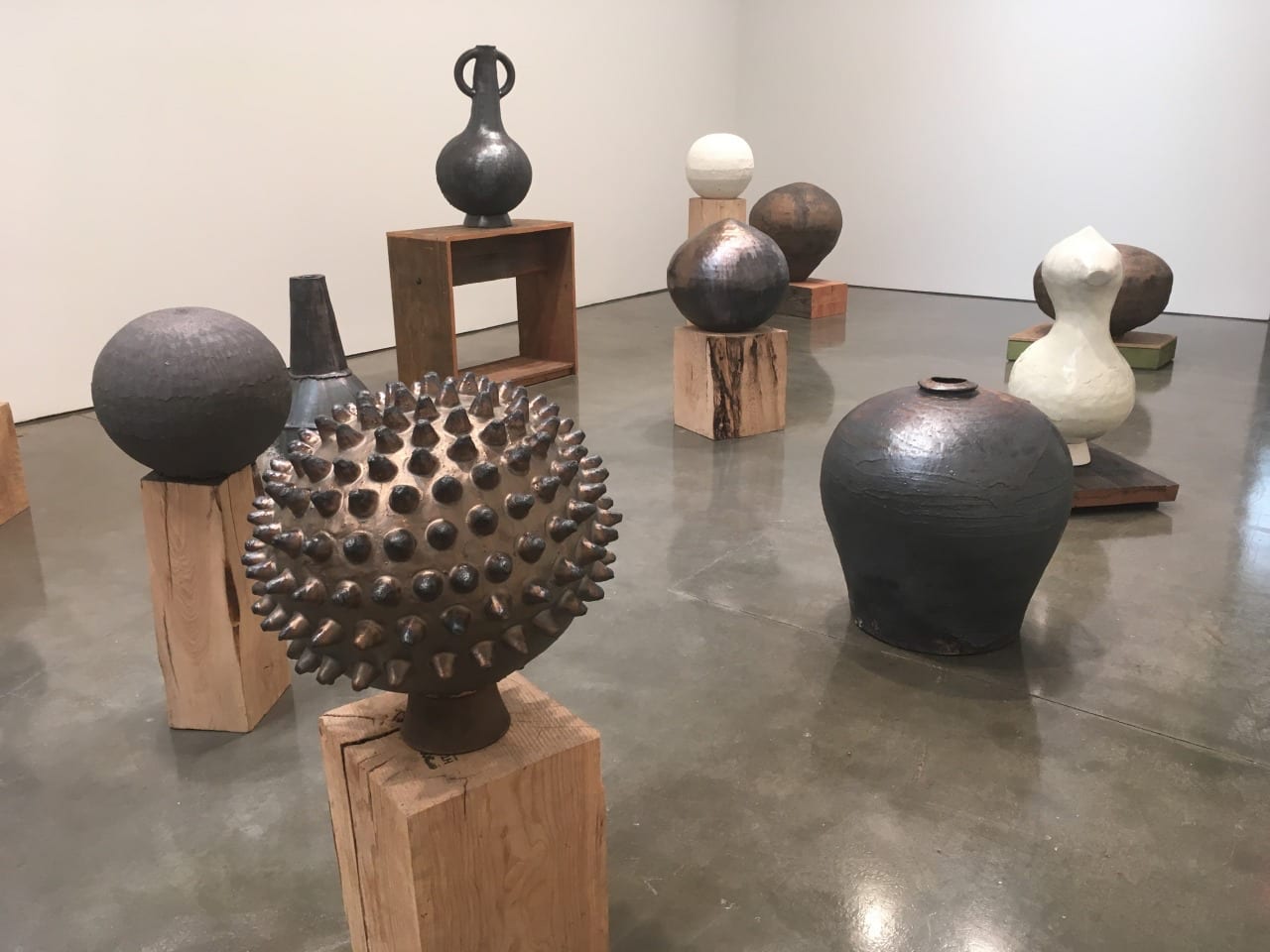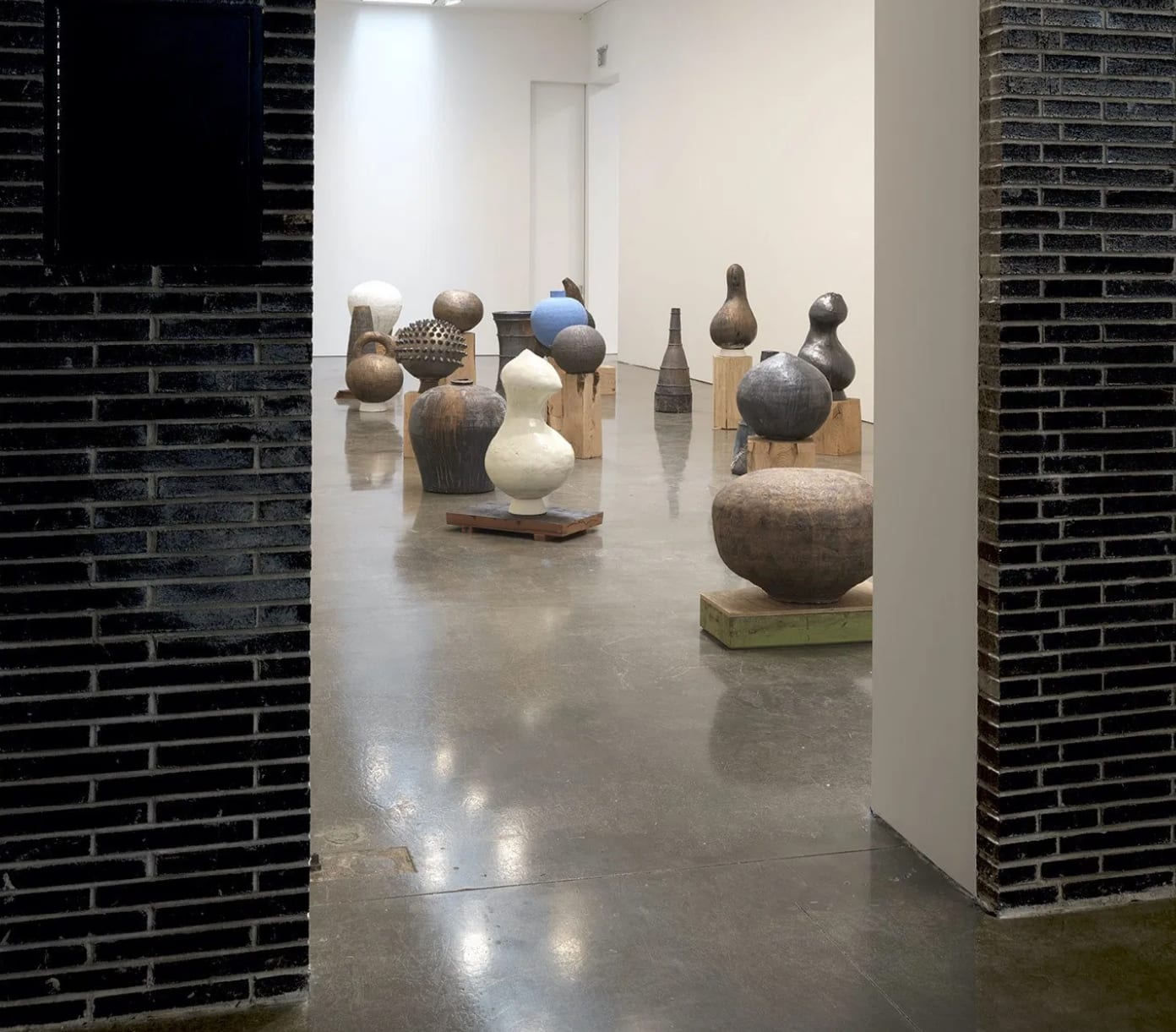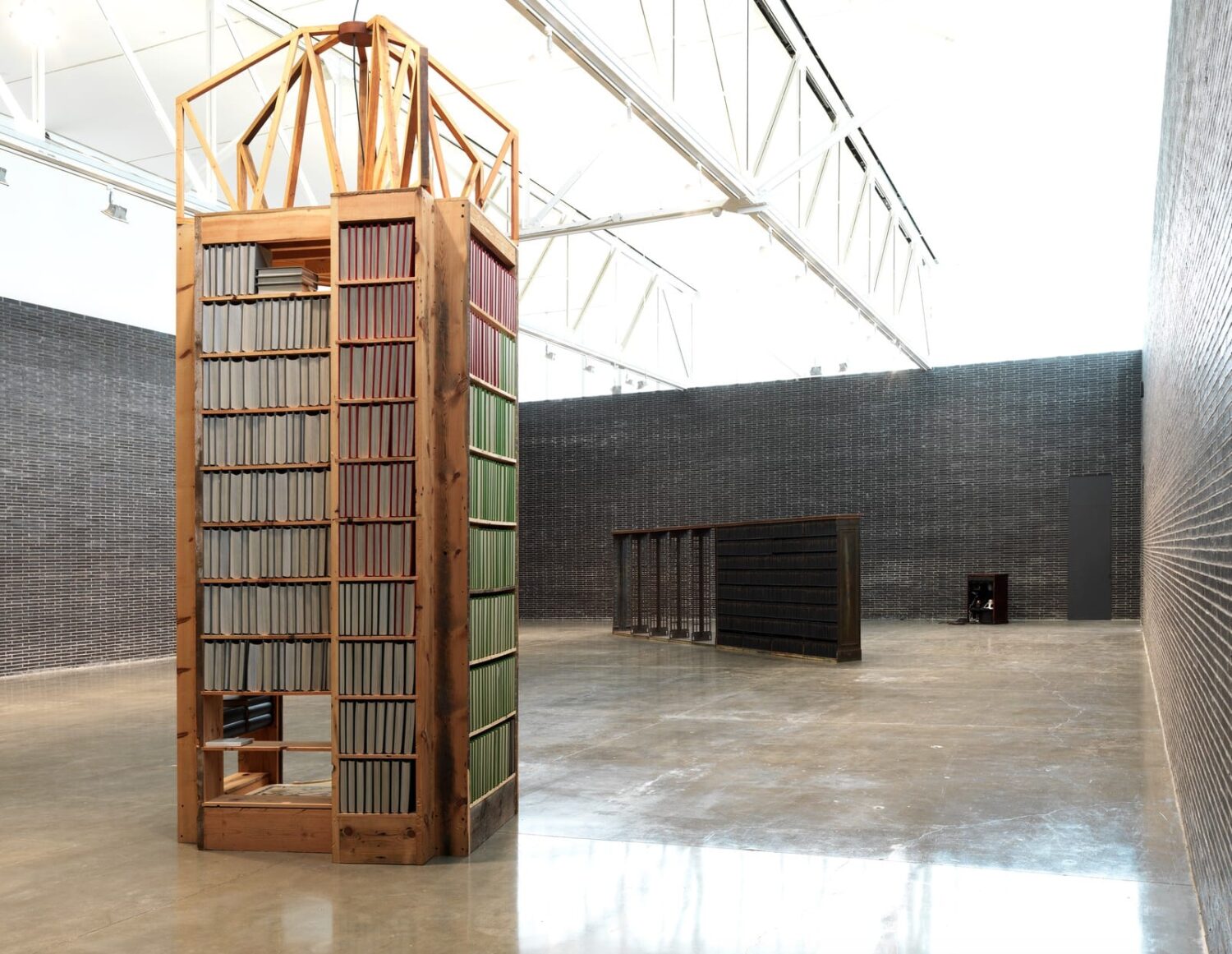I always find myself returning to the vessel. It is part of the intellectual life force of my practice and it precedes all other forms of making.
Theaster Gates
Theaster Gate’s first New York exhibition, Black Vessel, recently launched at Gagosian (he already has been listed as #9 in the 100 most influential figures in contemporary art today so, yes, you can become a major art world star without the Big Apple). The Gallery rightly describes Gates’s oeuvre as being among the most conceptually and materially rich in contemporary art today, “anchored equally in the canons of art history, the racial ideology of the Black diaspora, and the artist’s own personal history. Gates exchanges and recharges objects and ideas, proposing the artwork as a communicating vessel or sacred reliquary of recollected histories, critical vitality, and shared experience”.
“The Brick Reliquaries (2020) are Gates’s latest sculptural experiments. By firing bricks with a strong manganese content to an excessive 2300°F, the known properties of the materials are transformed into the mysteries of heat-based sculpture. In some instances, the material loses its specificity when pushed to such limits; in others, the carbide shelves inside the kiln fuse with the bricks and other sculptural elements that rest on them, becoming host to material transformation.





Gates promotes the vessel as a container of the concrete, the symbolic, and the spiritual—a metaphor for embodied existence or a means by which to gather communities together in time and space. For him, the clay vessel is a universal object of ritual significance. In a diverse group of unique large-scale works in glazed and fired clay, his evident formal virtuosity unites ancient traditions with modernist aesthetics, and draws elective affinities between Eastern, Western, and African techne”.
If you are looking for the Black Vessel, it is not in the cluster of pots, even though one is black and large. The Black Vessel is the huge brick lined space itself which is a container:
“Switching scales from vessel as object to vessel as architecture, Gates has dramatically transformed the vast west gallery into a resonant place for shared contemplation by lining the walls entirely with Roman bricks customized from reconstituted remainders, blackened with manganese dioxide and dye. (A direct precursor to this gesture is the 2017 permanent commission Black Vessel for a Saint at the Walker Art Center in Minneapolis, a minimalist cylindrical shrine built from black bricks that contains a life-size statue of St. Laurence, the patron saint of librarians and archivists.)”



In 2012 Gates began to formalize his knowledge of roofing techniques into a new territory of experimental painting, working with tar to make the invisible roof legible. In a new suite of paintings completed this year, Gates has intensified his approach, crafting painted torch down into taut cojoined backdrops for the interplay of archaeological tarred fragments.
Using tar, New York Times reviewer Yinka Elujoba explains, Gates imbues the show with earthiness, or as he puts it “the sense of a coordinated blemish, accentuated by smeared surfaces”:
“The smudges bring to mind the story of a Maryland slave owner, Col. Edward Lloyd VI, who, in the mid-1800s, cultivated a large, beautiful garden that attracted visitors from far and wide. Then its fine fruits began to attract other visitors: his hungry slaves. At first Lloyd whipped those caught stealing but he soon realized this was not enough to deter them. In the end, he tarred the garden’s fence, and if a slave was caught with tar marks it became proof that the person had tried or succeeded in stealing. “This plan worked well,” the African-American abolitionist Frederick Douglass wrote in his autobiography, adding, “the slaves became as fearful of tar as of the lash.”
Some 200 years ago, to survive in America, Black people had to escape defilement. To be smeared with tar was literally to die. Mr. Gates has embraced this stain, turning it into art. America’s past is irredeemable, as difficult to wash off as tar. One hopes that with his gesture, a part of its future might still be salvaged”.
Learn more about Theaster Gates in Cfile.

Add your valued opinion to this post.